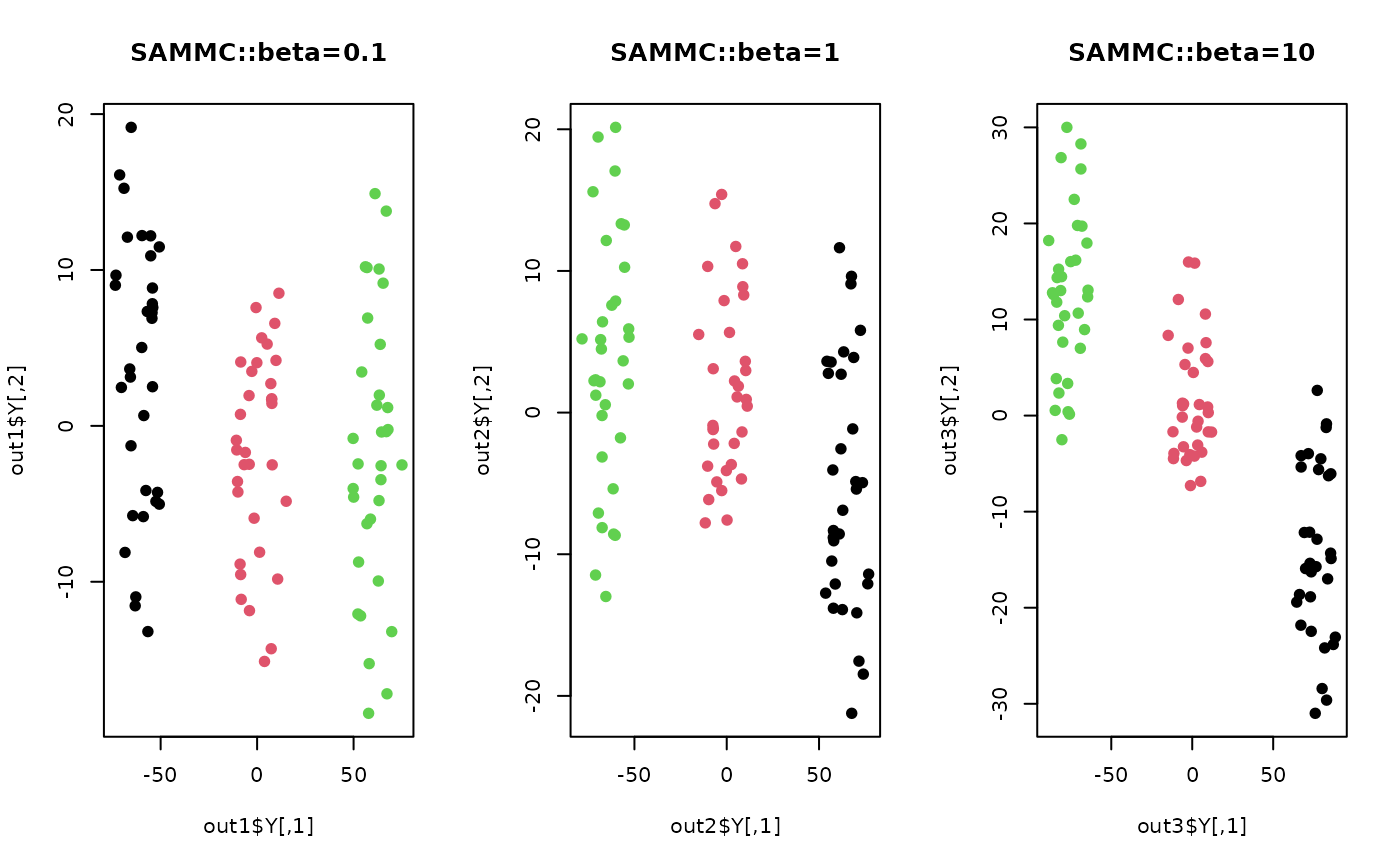Semi-Supervised Adaptive Maximum Margin Criterion (SAMMC) is a semi-supervised variant of AMMC by making use of both labeled and unlabeled data.
Arguments
- X
an \((n\times p)\) matrix or data frame whose rows are observations and columns represent independent variables.
- label
a length-\(n\) vector of data class labels.
- ndim
an integer-valued target dimension.
- type
a vector of neighborhood graph construction. Following types are supported;
c("knn",k),c("enn",radius), andc("proportion",ratio). Default isc("proportion",0.1), connecting about 1/10 of nearest data points among all data points. See alsoaux.graphnbdfor more details.- preprocess
an additional option for preprocessing the data. Default is "center". See also
aux.preprocessfor more details.- a
tuning parameter for between-class weight in \([0,\infty)\).
- b
tuning parameter for within-class weight in \([0,\infty)\).
- lambda
balance parameter for between-class and within-class scatter matrices in \((0,\infty)\).
- beta
balance parameter for within-class scatter of the labeled data and consistency of the whole data in \((0,\infty)\).
Value
a named list containing
- Y
an \((n\times ndim)\) matrix whose rows are embedded observations.
- trfinfo
a list containing information for out-of-sample prediction.
- projection
a \((p\times ndim)\) whose columns are basis for projection.
References
Lu J, Tan Y (2011). “Adaptive Maximum Margin Criterion for Image Classification.” In 2011 IEEE International Conference on Multimedia and Expo, 1--6.
Examples
## generate data of 3 types with clear difference
set.seed(100)
dt1 = aux.gensamples(n=33)-50
dt2 = aux.gensamples(n=33)
dt3 = aux.gensamples(n=33)+50
## merge the data and create a label correspondingly
X = rbind(dt1,dt2,dt3)
label = rep(1:3, each=33)
## copy a label and let 20% of elements be missing
nlabel = length(label)
nmissing = round(nlabel*0.20)
label_missing = label
label_missing[sample(1:nlabel, nmissing)]=NA
## try different balancing
out1 = do.sammc(X, label_missing, beta=0.1)
out2 = do.sammc(X, label_missing, beta=1)
out3 = do.sammc(X, label_missing, beta=10)
## visualize
opar <- par(no.readonly=TRUE)
par(mfrow=c(1,3))
plot(out1$Y, pch=19, col=label, main="SAMMC::beta=0.1")
plot(out2$Y, pch=19, col=label, main="SAMMC::beta=1")
plot(out3$Y, pch=19, col=label, main="SAMMC::beta=10")
 par(opar)
par(opar)